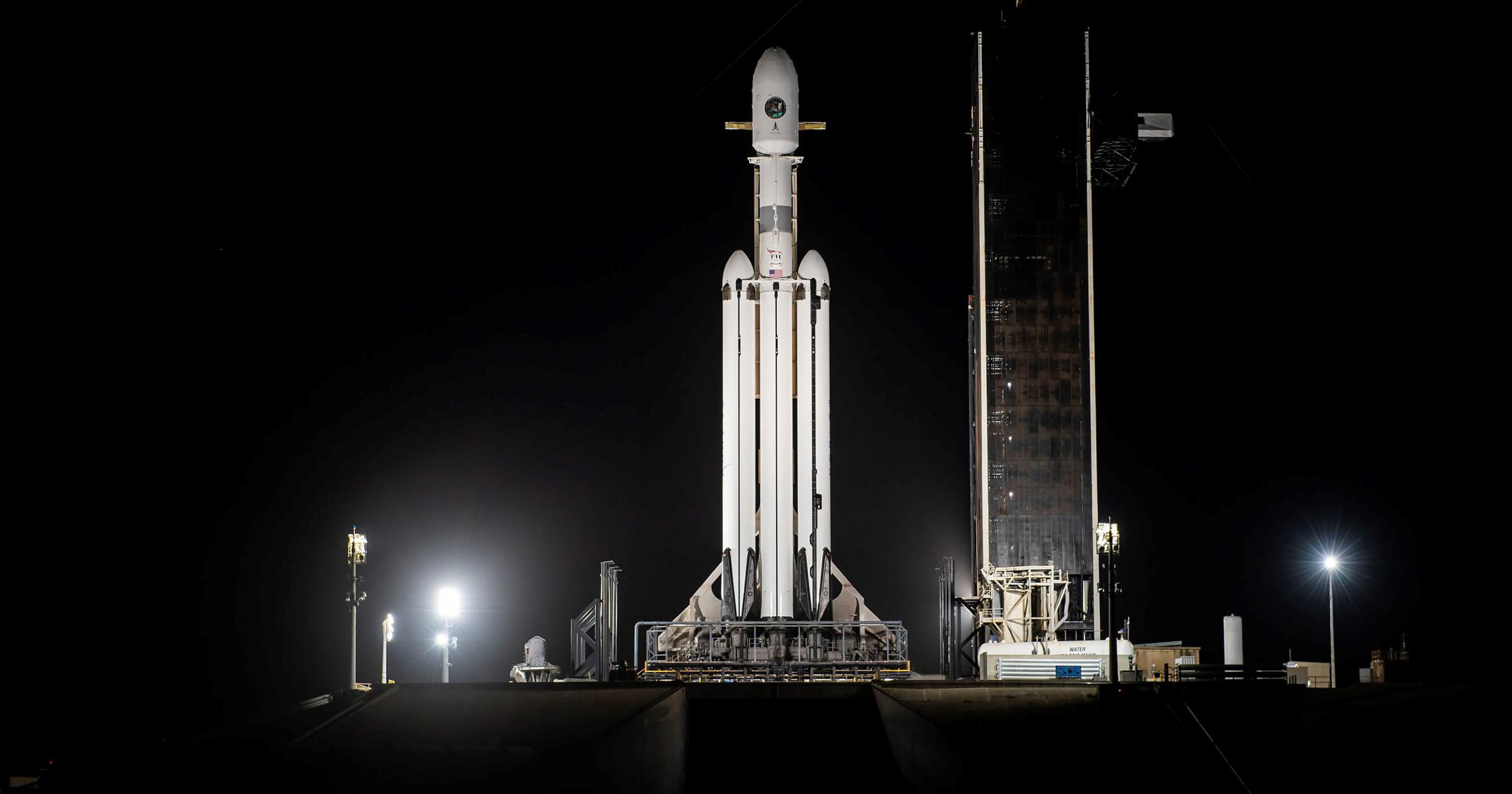
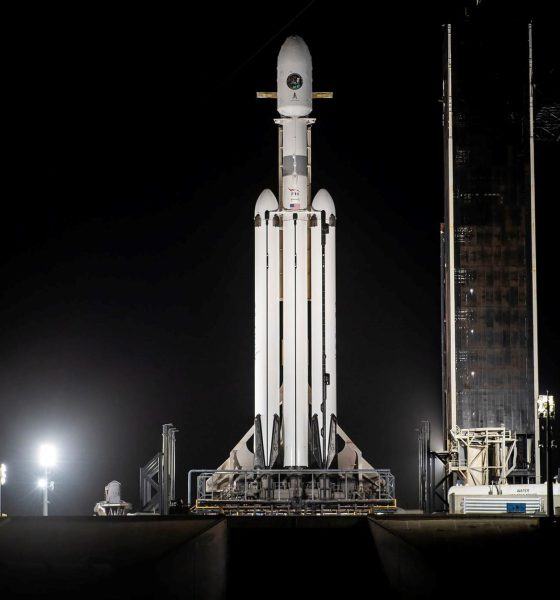
News
SpaceX’s next Falcon Heavy rocket on track for early 2023 launch
Two weeks after SpaceX’s first Falcon Heavy launch in three and a half years, the US Space Force says that the rocket is on track to launch again “early next year.”
Immediately before and after Falcon Heavy’s first operational launch for the US Space Force, the Space Systems Command confirmed that the massive SpaceX rocket’s next military launch – USSF-67 – was scheduled no earlier than January 2023. The military also confirmed that USSF-67 would reuse two of the three Falcon Heavy boosters that helped launch USSF-44 on November 1st.
Two weeks later, the US Space Force’s tone hasn’t changed, and the Space Systems Command remains confident that Falcon Heavy is on track to launch USSF-67 less than three months after USSF-44.
Assuming the lack of a schedule change is intentional rather than a matter of not checking with SpaceX or other US stakeholders, no change is a good sign. Since the last time the SSC reported that USSF-67 was on track to launch in January 2023, SpaceX successfully launched its fourth Falcon Heavy rocket. USSF-44 was the company’s first launch directly into a geosynchronous orbit ~36,000 kilometers (~22,300 mi) above Earth’s surface.
SpaceX successfully recovered both of Falcon Heavy’s ‘side cores’ and has likely had enough time to thoroughly inspect each booster and begin the refurbishment process. If data gathered from the launch, landing, or recovered boosters uncovered issues with Falcon Heavy’s performance during USSF-44, USSF-67 would almost certainly be delayed. The chances of a delay are magnified by the fact that USSF-67 can’t launch until two of USSF-44’s Falcon Heavy boosters are refurbished and declared ready for a second flight.
But it appears that even a gap of 40 months between Falcon Heavy launches wasn’t enough to make SpaceX falter – at least after working out some prelaunch kinks. SpaceX accomplished a similar feat – launching two Falcon Heavy rockets in less than three months with one pair of side boosters – on the rocket’s second and third launches in April and June 2019. The mission that reused Flight 2’s side boosters was for the US Air Force, so SpaceX and the military already have direct experience tackling those challenges.
In the three and a half years since, SpaceX has gained a huge amount of experience recovering and refurbishing Falcon 9 Block 5 boosters and slashed its record turnaround (the time between two launches of the same booster) from 74 days to 21 days. SpaceX should thus have no issue turning Falcon Heavy side boosters B1064 and B1065 around for a second launch in January 2023, around 60 to 91 after their debut.
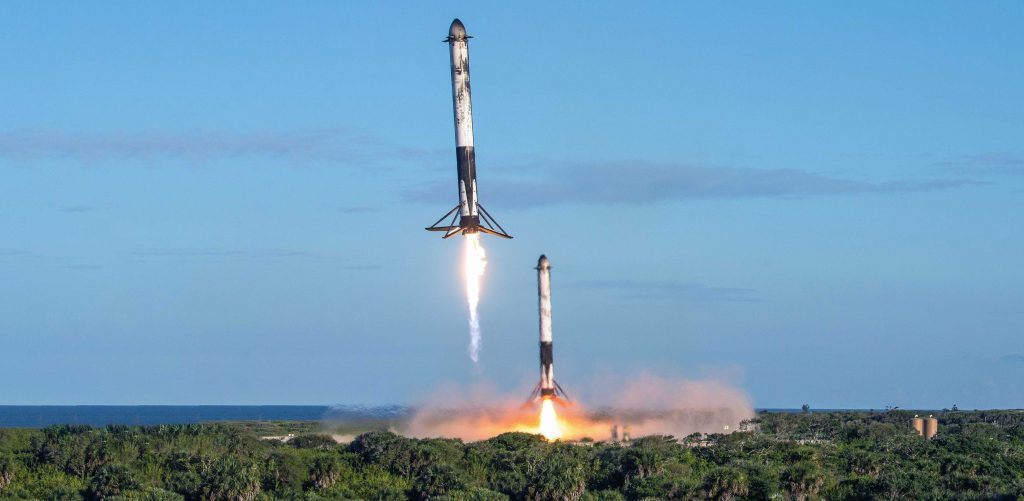
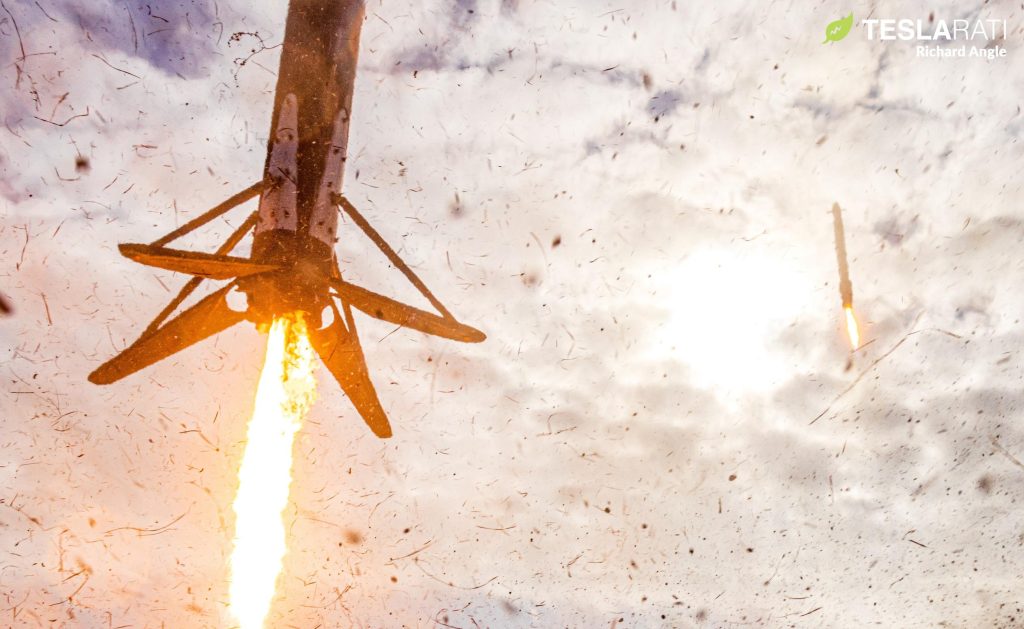
While preparing one Falcon Heavy rocket to launch USSF-67 in January, SpaceX – at least according to customer ViaSat – may also be preparing another Falcon Heavy rocket to launch the first ViaSat-3 satellite the same month. Unlike the US Space Force, which recently shipped [PDF] one of USSF-67’s payloads to Florida, ViaSat has yet to ship its first next-generation satellite to the launch site and says that milestone is scheduled for December 2022. That makes a February or March launch much more likely, but ViaSat recently told shareholders that ViaSat-3 remains on track to launch “in the earliest part of” Q1 2023.
Combined, USSF-67 and ViaSat-3 are scheduled to reuse Falcon Heavy side boosters B1064, B1065, B1052, and B1053. Each will use a brand new center core: B1068 for ViaSat-3 and B1079 for USSF-67, according to Next Spaceflight. Like USSF-44, which was the first time SpaceX intentionally expended a Falcon Heavy booster, both new center cores are expected to be expended.
For several reasons, assembling and preparing Falcon Heavy for launch is significantly more time-consuming than Falcon 9, so there will likely be at least a two, three, or even four-week gap between Falcon Heavy’s next two launches. But as long as USSF-67 and ViaSat-3 are ready to fly during narrow windows in early and late January, it appears that SpaceX could launch two Falcon Heavy rockets in one calendar month.
SpaceX has as many as five Falcon Heavy launches scheduled in 2023 – a stark change after more than three years without a single flight.

News
Tesla’s new Holiday perk is timed perfectly to make FSD a household name
Tesla AI4 owners get FSD (Supervised) through Christmas, New Year’s Eve and well into the post-holiday travel season.

Tesla quietly rolled out a free Full Self-Driving (Supervised) trial for roughly 1.5 million HW4 owners in North America who never bought the package, and the timing could very well be genius.
As it turns out, the trial doesn’t end after 30 days. Instead, it expires January 8, 2026, meaning owners get FSD (Supervised) through Christmas, New Year’s Eve and well into the post-holiday travel season. This extended window positions the feature for maximum word-of-mouth exposure.
A clever holiday gift
Tesla watcher Sawyer Merritt first spotted the detail after multiple owners shared screenshots showing the trial expiring on January 8. He confirmed with affected users that none had active FSD subscriptions before the rollout. He also observed that Tesla never called the promotion a “30-day trial,” as the in-car message simply reads “You’re Getting FSD (Supervised) For the Holidays,” which technically runs until after the new year.
The roughly 40-day period covers peak family travel and gatherings, giving owners ample opportunity to showcase the latest FSD V14’s capabilities on highway trips, crowded parking lots and neighborhood drives. With relatives riding along, hands-off highway driving and automatic lane changes could become instant conversation starters.
Rave reviews for FSD V14 highlight demo potential
FSD has been receiving positive reviews from users as of late. Following the release of FSD v14.2.1, numerous owners praised the update for its smoothness and reliability. Tesla owner @LactoseLunatic called it a “huge leap forward from version 14.1.4,” praising extreme smoothness, snappy lane changes and assertive yet safe behavior that allows relaxed monitoring.
Another Tesla owner, @DevinOlsenn, drove 600 km without disengagements, noting his wife now defaults to FSD for daily use due to its refined feel. Sawyer Merritt also tested FSD V14.2.1 in snow on unplowed New Hampshire roads, and the system stayed extra cautious without hesitation. Longtime FSD tester Chuck Cook highlighted improved sign recognition in school zones, showing better dynamic awareness. These reports of fewer interventions and a more “sentient” drive could turn family passengers into advocates, fueling subscriptions come January.
Elon Musk
Elon Musk predicts AI and robotics could make work “optional” within 20 years
Speaking on entrepreneur Nikhil Kamath’s podcast, Musk predicted that machines will soon handle most forms of labor, leaving humans to work only if they choose to.
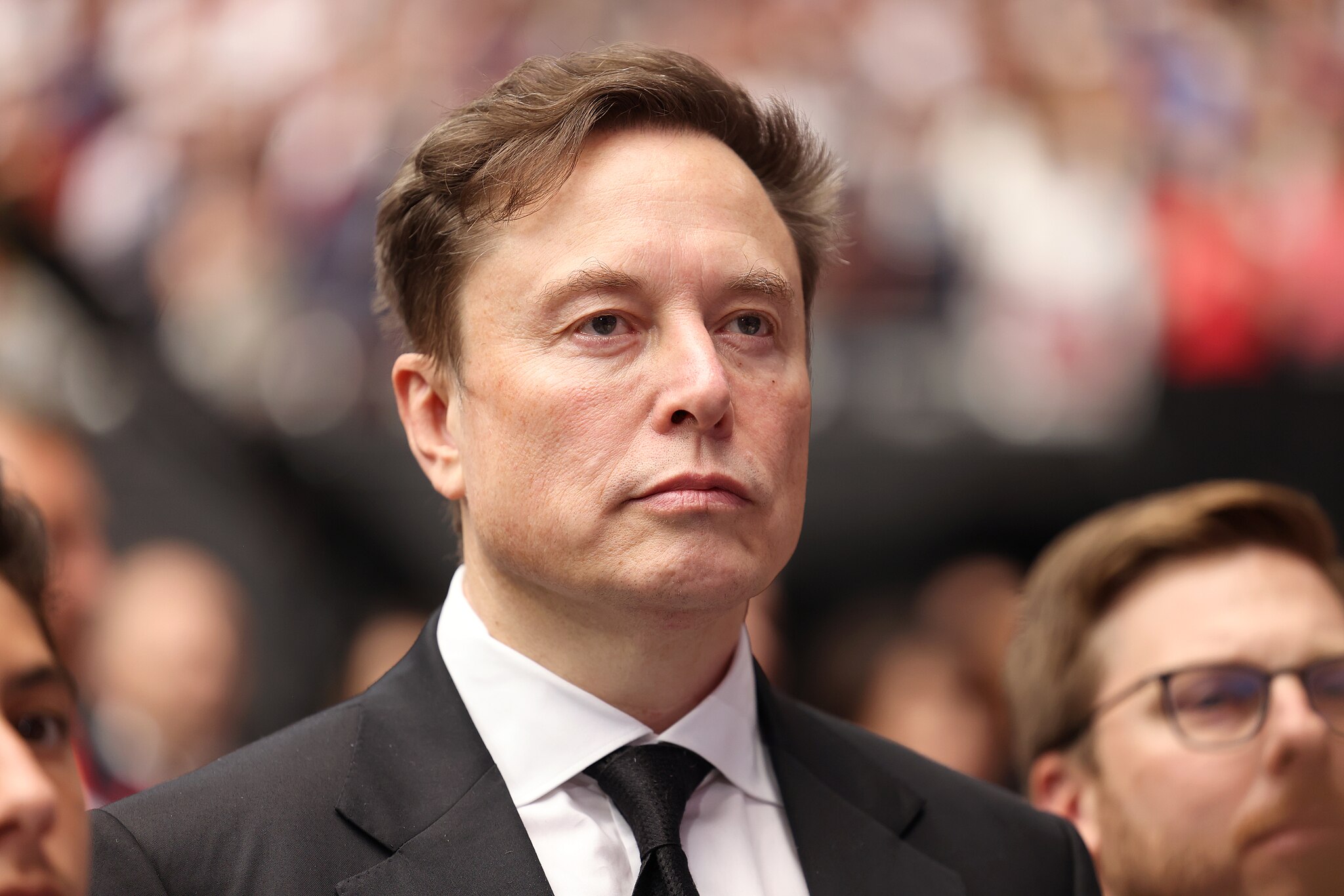
Elon Musk stated that rapid advances in artificial intelligence and robotics could make traditional work unnecessary within two decades.
Speaking on entrepreneur Nikhil Kamath’s podcast, Musk predicted that machines will soon handle most forms of labor, leaving humans to work only if they choose to.
Work as a “hobby”
During the discussion, Musk said the accelerating capability of AI systems and general-purpose robots will eventually cover all essential tasks, making human labor a choice rather than an economic requirement. “In less than 20 years, working will be optional. Working at all will be optional. Like a hobby,” Musk said.
When Kamath asked whether this future is driven by massive productivity growth, Musk agreed, noting that people will still be free to work if they enjoy the routine or the challenge. He compared future employment to home gardening, as it is something people can still do for personal satisfaction even if buying food from a store is far easier.
“Optional” work in the future
Elon Musk acknowledged the boldness of his claim and joked that people might look back in 20 years and say he was wrong. That being said, the CEO noted that such a scenario could even happen sooner than his prediction, at least if one were to consider the pace of the advancements in AI and robotics.
“Obviously people can play this back in 20 years and say, ‘Look, Elon made this ridiculous prediction and it’s not true,’ but I think it will turn out to be true, that in less than 20 years, maybe even as little as ten or 15 years, the advancements in AI and robotics will bring us to the point where working is optional,” Musk said.
Elon Musk’s comments echo his previous sentiments at Tesla’s 2025 Annual Shareholder Meeting, where he noted that Optimus could ultimately eliminate poverty. He also noted that robots like Optimus could eventually provide people worldwide with the best medical care.
Elon Musk
Elon Musk reiterates why Tesla will never make an electric motorcycle
Tesla CEO Elon Musk preemptively shut down speculations about a Tesla road bike once more.
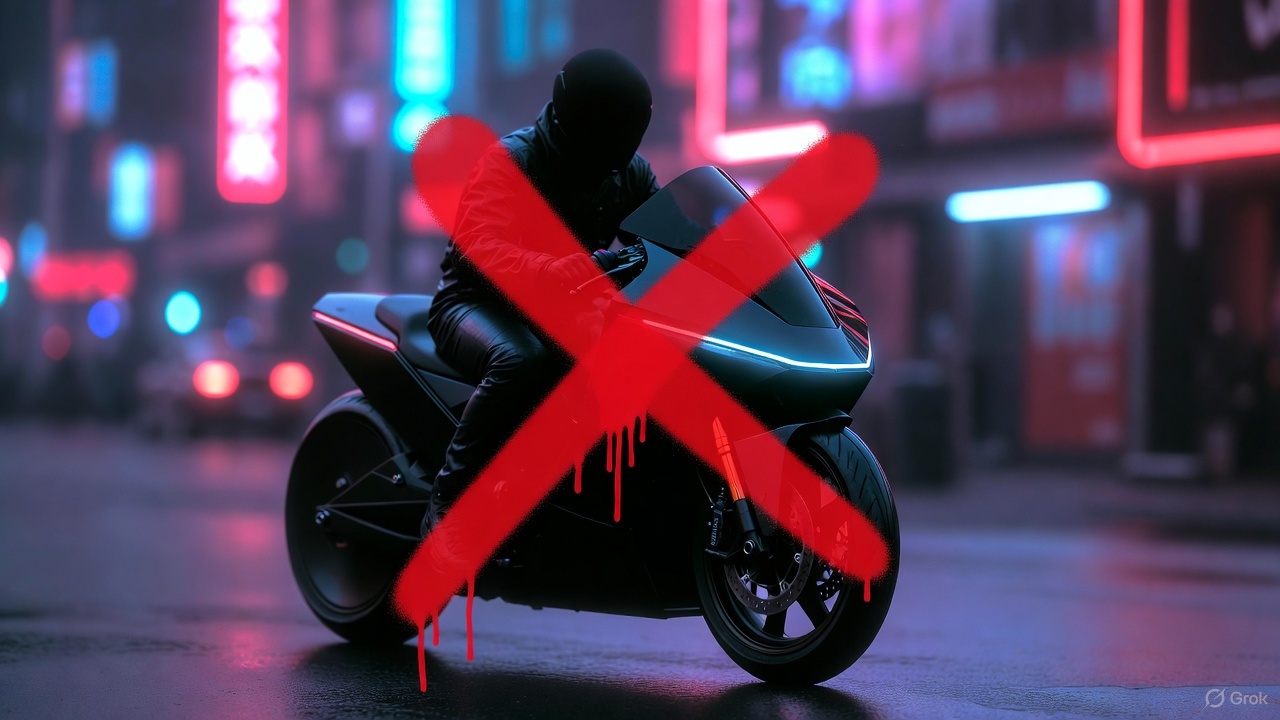
Tesla CEO Elon Musk preemptively shut down speculations about a Tesla road bike once more, highlighting that the electric vehicle maker has no plans to enter the electric motorcycle market.
Musk posted his clarification in a post on X.
Musk’s reply to a fun AI video
X user @Moandbhr posted an AI video featuring the Tesla CEO on the social media platform, captioning it with “Mr. Elon Musk Just Revealed the Game-Changing Tesla Motorcycle.” The short clip depicted Musk approaching a sleek, single-wheeled vehicle, stepping onto it, and gliding off into the distance amid cheers. The fun video received a lot of traction on X, gaining 3.1 million views as of writing.
Musk replied to the post, stating that a Tesla motorcycle is not going to happen. “Never happening, as we can’t make motorcycles safe. For Community Notes, my near death experience was on a road bike. Dirt bikes are safe if you ride carefully, as you can’t be smashed by a truck,” Musk wrote in his reply.
Musk’s Past Comments on Two-Wheelers
Musk also detailed his reservations about motorcycles in a December 2019 X post while responding to questions about Tesla’s potential ATV. At the time, he responded positively to an electric ATV, though he also opposed the idea of a Tesla road-going motorcycle. Musk did state that electric dirt bikes might be cool, since they do not operate in areas where large vehicles like Class 8 trucks are present.
“Electric dirt bikes would be cool too. We won’t do road bikes, as too dangerous. I was hit by a truck & almost died on one when I was 17,” Musk wrote in his post.
Considering Musk’s comments about dirt bikes, however, perhaps Tesla would eventually offer a road bike as a recreational vehicle. Such a two-wheeler would be a good fit for the Cybertruck, as well as future products like the Robovan, which could be converted into an RV.









